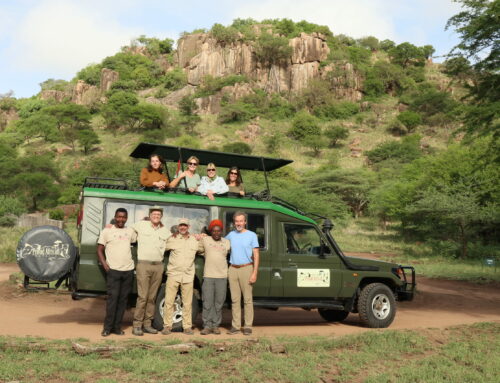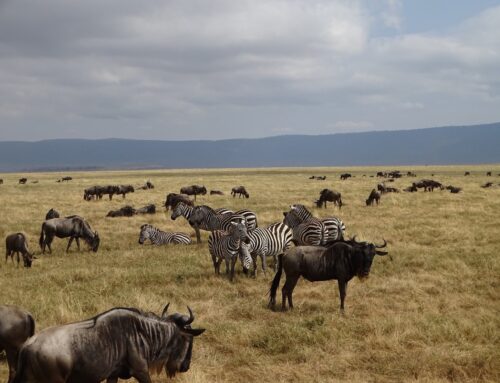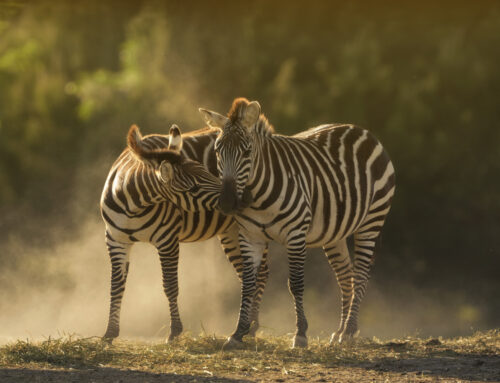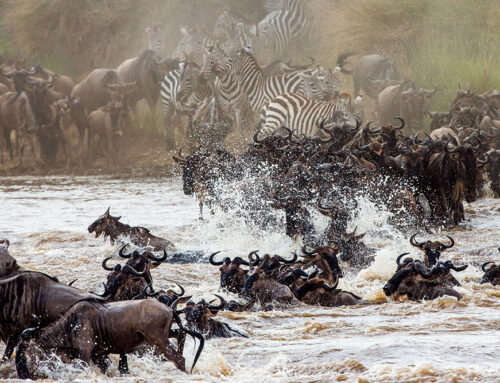When you think of the risks that threaten wildlife in the Serengeti, insects and plants probably aren’t the first things that come to mind. A new study indicates that perhaps they should be, though.
Nature has a very delicate balance; it knows what it’s doing. So when the precise ecosystems of the Serengeti are thrown off balance by a new plant or insect, everything can be thrust into disarray. For example, if an invasive plant species makes its way into the Serengeti and outcompetes the plants that animals eat for sunlight, those animals’ food source can be threatened.
This is especially troubling for wildebeest, zebra, and gazelles, as it is predicted that they will bear a significant impact if invasive species aren’t effectively managed.
They say that big things come in small packages, but when it comes to risk factors for Serengeti wildlife, big things sometimes arrive in invisible packages. Microbes have begun wreaking havoc on the Serengeti in the form of Canine Distemper.
This disease originated in domestic dogs in the region, but was eventually spread to lions. Due to their contraction of the disease, about 30% of the lion population in the area died. Now, the spread of canine distemper is an even more prominent threat as carnivores continue to spread it rapidly.
While it seems like managing these issues should be a top priority, it, unfortunately, takes funds that often aren’t present. This is why it’s so important to patronize safari businesses that care about the long-term health of the Serengeti, its animals, and its ecosystems.
With the proper care and attention, the issue of invasive species in the Serengeti can be managed to the point that they are not dire, but it will take a great deal of work from those who love and respect this beautiful region.
When you think of the risks that threaten wildlife in the Serengeti, insects and plants probably aren’t the first things that come to mind. A new study indicates that perhaps they should be, though.
Nature has a very delicate balance; it knows what it’s doing. So when the precise ecosystems of the Serengeti are thrown off balance by a new plant or insect, everything can be thrust into disarray. For example, if an invasive plant species makes its way into the Serengeti and outcompetes the plants that animals eat for sunlight, those animals’ food source can be threatened.
This is especially troubling for wildebeest, zebra, and gazelles, as it is predicted that they will bear a significant impact if invasive species aren’t effectively managed.
They say that big things come in small packages, but when it comes to risk factors for Serengeti wildlife, big things sometimes arrive in invisible packages. Microbes have begun wreaking havoc on the Serengeti in the form of Canine Distemper.
This disease originated in domestic dogs in the region, but was eventually spread to lions. Due to their contraction of the disease, about 30% of the lion population in the area died. Now, the spread of canine distemper is an even more prominent threat as carnivores continue to spread it rapidly.
While it seems like managing these issues should be a top priority, it, unfortunately, takes funds that often aren’t present. This is why it’s so important to patronize safari businesses that care about the long-term health of the Serengeti, its animals, and its ecosystems.
With the proper care and attention, the issue of invasive species in the Serengeti can be managed to the point that they are not dire, but it will take a great deal of work from those who love and respect this beautiful region.






